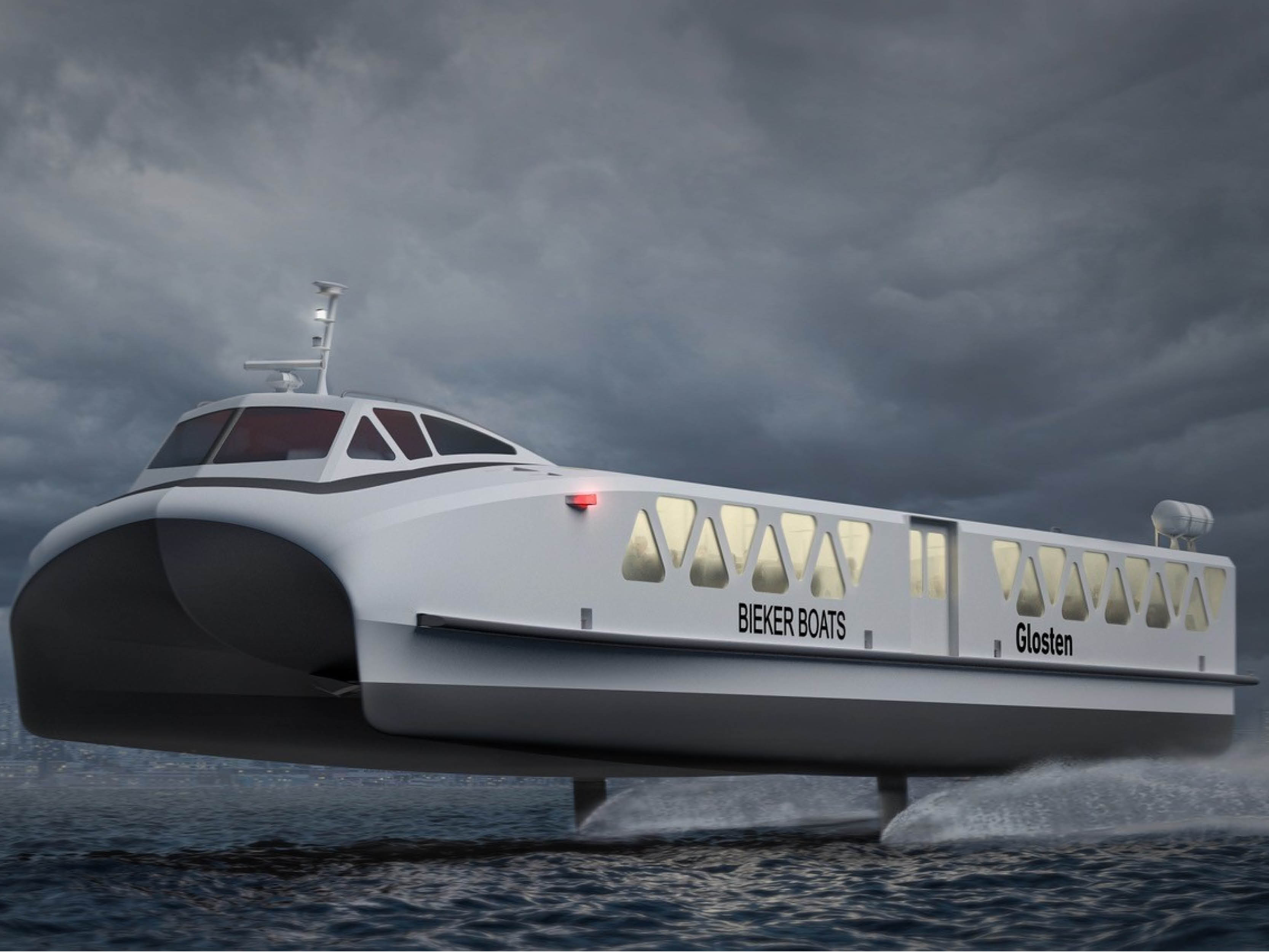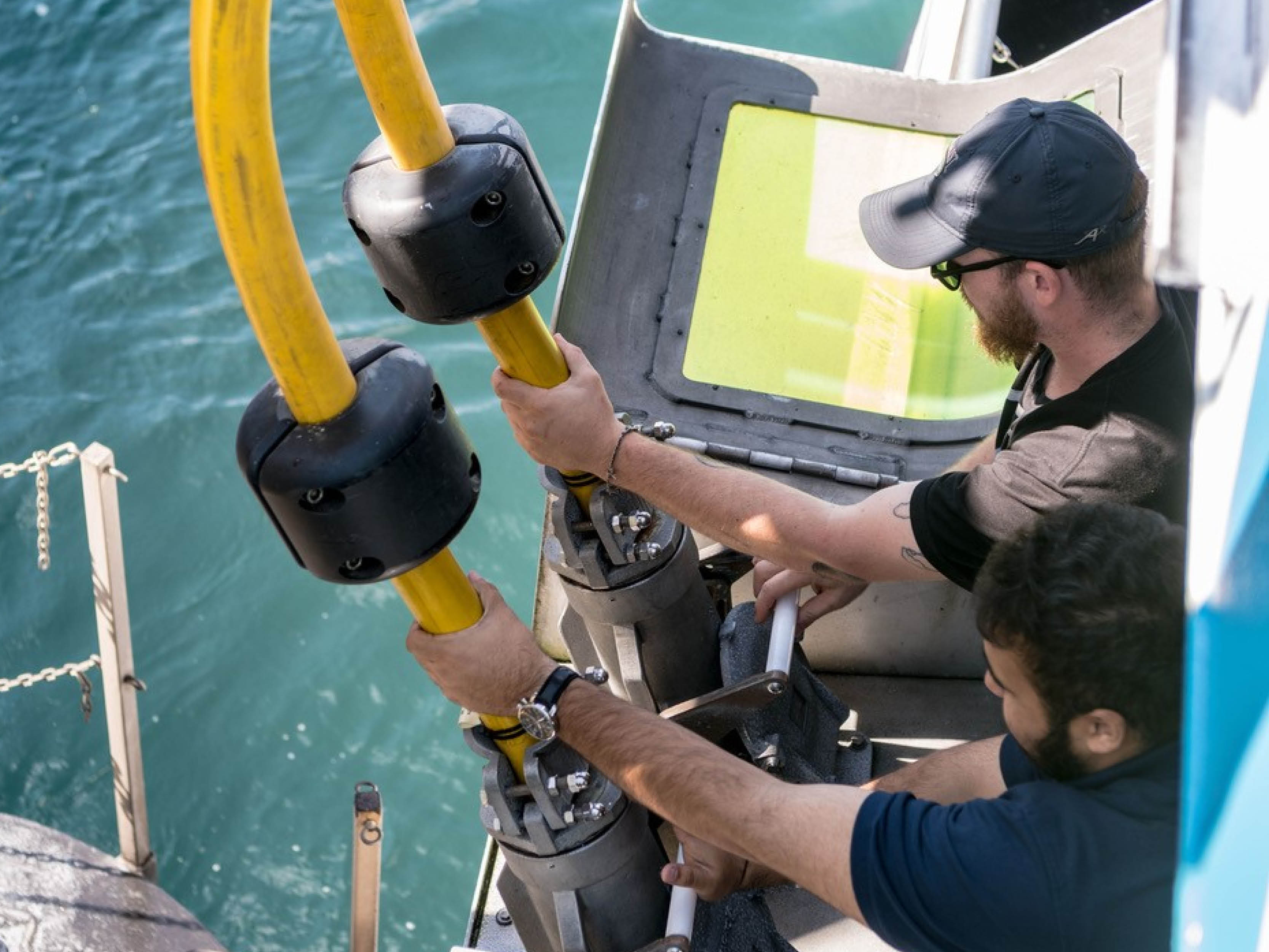While working on this story about electrically powered commercial vessels, this headline from Popular Mechanics caught my eye: “The Battery That Will Finally Unlock Massless Energy Storage.”
What, I wondered, is massless energy storage?
It turns out that massless energy storage incorporates what we once called a “battery” into the structure of a vehicle, vessel or aircraft. There is no need for a separate battery, hence the term massless, as the storage of energy adds no weight.
It would be as if two-by-fours were also batteries.
In March 2021, ScienceDaily reported on research conducted at Chalmers University of Technology in Sweden on battery technology that included a carbon-fiber negative electrode and a positive electrode made of lithium iron phosphate-coated aluminum foil, separated by a fiberglass fabric, all of which is “impregnated with a structural battery electrolyte for combined mechanical and electrical function.”
The 2021 iteration of this battery has a 24 Wh/kg energy density, which is only about 20% of non-structural lithium-ion batteries. But Leif Asp, a professor at Chalmers and the leader of the structural battery project, said continued development could reach an energy density of 75 Wh/kg with a stiffness of 75 GPa. “This would make the battery about as strong as aluminum, but with comparatively much lower weight,” he said.
The utility of a structural battery is clear. Demand for low- or zero-emissions vessels is growing steadily, and battery-powered boats are an obvious consideration. But because today’s batteries are relatively bulky and heavy, packing enough battery power for high-speed and/or long-distance or heavy passenger/cargo load has been the problem for both boats and airplanes.

MISSION MATTERS
But it’s a boat’s mission that defines the possible power configuration. If you travel slowly for only short distances, like some tour boats or ferries, batteries alone could work well. Such is the case with two 600-passenger tour boats owned and operated by Maid of the Mist, Niagara Falls, N.Y. The all-electric, 90'×33' aluminum catamarans will begin their third season next spring. The two boats run regular 20-minute excursions and then get their batteries recharged from 60% to 80% in seven minutes from two massive shore-power connections while passengers get off and on.
In many if not most situations, tapping into the local grid for that kind of juice spike would be a challenge, but Maid of the Mist operations are adjacent to Niagara Falls’ hydroelectric generators, so there’s plenty of steady, carbon-free electricity.
The two boats, James V. Glynn and Nikola Tesla, were designed by Propulsion Data Services, Marblehead, Mass., and built by Burger Boats, Manitowoc, Wis., in 2019-2020. The boats were delivered in modular sections and assembled at Maid of the Mists’ maintenance facility at Niagara Falls. The power and control package were designed and supplied by ABB Marine and Ports. Essential equipment includes manual Cavotec shore-to-ship battery charging connections, and each vessel receives power from a pair of Spear Power Systems lithium-ion battery packs providing 316 kWh total. There are no onboard generators.
The boats are working out well. “There isn’t an electric boat of this size in North America,” said Christopher Glynn, president of Maid of the Mist Corp. “It’s very quiet. No engine noise, no vibration, no exhaust fumes. It’s really spectacular.”

FLYING HIGH
Another avenue for using battery power on boats is to further reduce vessel weight. Using carbon-fiber materials for vessel construction cuts the weight significantly, which allows designers to add hydrofoils that lift the entire vessel partially or totally out of the water while underway. The America’s Cup boats get the amazing speed they achieve thanks to carbon-fiber construction and hydrofoils.
With that, and powered by large vertical wings, the boats can accelerate to 60 mph or more, which can be three or four times the speed of the wind.
When the hull and its load flying above the surface, water resistance is dramatically reduced, allowing faster speeds with less power. The same combination of lightweight construction and hydrofoils is beginning to be applied to the passenger vessel sector, in both Sweden and the U.S.
Green City Ferries, a private company based in Stockholm, Sweden, is building a pair of foil-assisted, carbon-fiber catamarans in two emissions-free options called the Beluga24. One is batteries-only, and one is powered by hydrogen fuel cells for longer routes. Either can carry 147 passengers and 28 bicycles. The company announced key suppliers last summer.
“The key to building an emission-free passenger ferry is to combine lightweight hull technologies, energy-efficient design, and a propulsion system that is both highly effective and lightweight,” said Fredrik Thornell, CEO of Green City Ferries. “By collaborating with BAE Systems for the power train, HamiltonJet for the jets and vessel controls, and Echandia for the battery and fuel cell systems, we have a combination of highly innovative and technical solutions that will enable the Beluga 24 to travel emission-free at high-speeds.”
The first two of the class are in production with delivery cited as sometime in 2023, with Stockholm-based passenger operations to start in early 2024. The foil-assisted hull technology was developed by Nik de Waal’s Teknicraft Design in New Zealand.
Another Swedish company, Candela, is also targeting Stockholm’s ferry system, but with smaller boats fully flying on hydrofoils, which has been a Candela specialty for several years. It started with recreational hydrofoils and is now marketing passenger boats for transit. “The wake is where the energy goes,” said Candela’s Erik Eklund. “That’s from friction. Our boats have almost zero wake.”
The 12-meter P-12 (4.5-meter beam) is a carbon-fiber, 30-passenger/one-operator catamaran hydrofoil. Loading and unloading is over the bow. Service speed is designed to be 25-27 knots, powered by underwater pods at the stern with internal electric motors turning opposing propeller sets. Battery capacity will be 252 kWh. Candela said charging would take 90 minutes to 3.2 hours, depending on service and battery discharge state.
Sensors on the struts and foils feed data to the “flight control” system that keeps the boat in balance at all times and provides “unmatched passenger comfort.” No noise, no exhaust fumes, no turbulence. No seasickness.
In the Puget Sound area, a consortium of partners, profit, and non-profit, are actively pursuing funding for the development of a similar high-speed, battery-powered passenger cat with full hydrofoils. The team is led by Glosten, the Seattle-based maritime technical consulting firm, and Bieker Boats, an engineering and design company now based in Anacortes, Wash. Paul Bieker, company namesake, was a key player in the successful engineering of the America’s Cup carbon-fiber hydrofoils.
Everything is still on paper for this project, but current plans call for a 27.5-meter (90') total length with a capacity of 150 passengers. Cruising speed will be 30 knots with a range of 30 nautical miles. A single mainfoil amidships will create primary lift and provide ride height and roll control. Twin, independent, aft propulsors with flapped elevator assemblies will push and steer the vessel.
Shoreside charging is expected to be provided by a battery energy storage system (BESS) with a 2.5mW load and 1-kV chargers.
With preliminary work completed, the partnership is pursuing state and federal funding for the construction and testing of a 1:5 scale prototype, permit level design for shoreside infrastructure, and detailed vessel design for construction.






